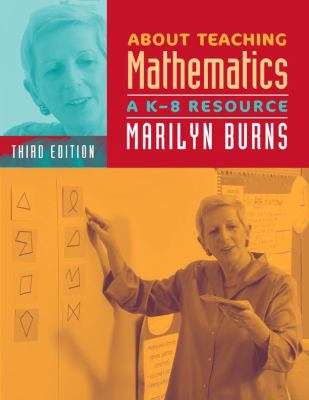I have come across this lesson before in the book About Teaching Mathematics: A K-8 Resource by Marilyn Burns. I had attempted the lesson before with some success, but my students weren't interested in pursuing the lesson to its full fruition. However, in Marilyn Burns newest edition About Teaching Mathematics: A K-8 Resource (Third Edition), Marilyn Burns goes into an indepth explanation of the patterns and formulas to be found in this activity (pp. 343-347) which will allow me to guide students to a more complete explanation.
So, using the format from "The Problem With Weak Handshakes" and the information from About Teaching Mathematics, today we discovered the answers!
I began by asking what three things make up a good handshake? (firm grip, eye contact, smile) I proceeded to go around the room and demonstrate this by shaking the hands of the students in the room. I then asked them to also get up and shake the hand of everyone in the room, BUT not to shake anyone's hand a second time.
Once everyone returned to their seat, I asked them to tell me how many handshakes had occurred.... Obviously, I got the unreasonable guesses, but no one seemed to know how to get to the correct solution. So, I asked the classes how we could work to solve this problem. One suggestion is that we line up, then one person at a time, walk the line, handshake and sit down and keep going until everyone was seated. So, we did this. We found that we could find the answer by adding consecutive numbers.
It was also suggested that we use a table to show our work.
We created a t-chart labeled: people/handshakes. I asked one student to stand. We determined that there was 1 "people" and 0 "handshakes". I asked a second person to stand. We determined that there were 2 "people" and 1 "handshake". We discussed the fact that we would not say that there was a handshake per person... there was only one handshake. We continued this until all of the people in the room were accounted for. By the end, we had kept a count of the number of handshakes for each person AND a total number of handshakes.
Now, I posed the question, "What if all of our students were in the room... how many handshakes would that be?" The classes knew they could either do a consecutive sum (which meant lots of numbers which could easily mess you up), or they could continue the table (which takes time and effort). Since they were a little hesitant to do these two options, I asked if they thought we could use the information from the table to help us figure out a formula for solving the problem.
They noticed that every time we added a person, the number of handshakes that person had was one less than the number of people. So, they determined that we should take the number of people, subtract one, and multiply. However, when we did this our number wasn't reasonable when we compared it to the chart. At this point, I had to remind them that when we multiply like this, we are counting BOTH my handshake with you AND your handshake with me. AHA! Immediately, someone in the room would say.... we need to divide by 2. This worked!
S0, if there were 20 total classmates, we would multiply 20 x 19 (taking yourself out). This was 380 handshakes. We needed to divide that by 2 (since two people have only 1 handshake). So, the total number of handshakes for 20 students was 190.
Next, I reminded them that we are having a First Class Titanic Luncheon in about two weeks, so I posed another question.... What if you shook every 5th grader's hand at the luncheon... how many handshakes will take place? It was much easier this time:
56 x 55 = 3080/2 = 1540 handshakes
I asked the classes if we could turn our new knowledge into an algebraic equation.... Of course we could! We used our above answer, to set up the equation:
P x (P-1)/2 = H
To check for individual understanding, I asked them to solve one more problem, use the formula, and explain their thinking:
If there were 101 people meeting for the first time,
how many handshakes would there be?
The answer: 101 x 100 = 10100/2 = 5050 handshakes
HOMEWORK: Countdown 7.5







No comments:
Post a Comment